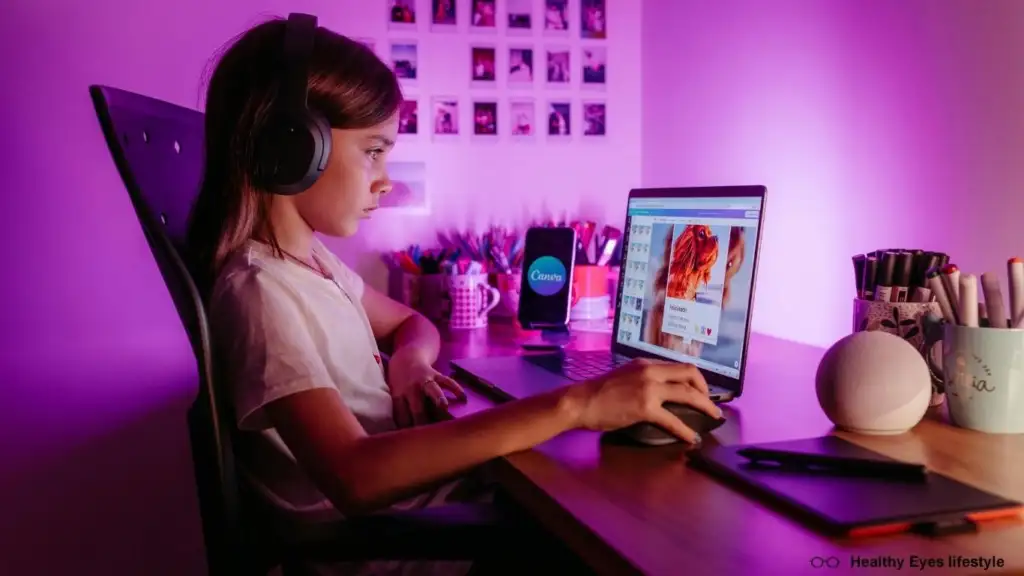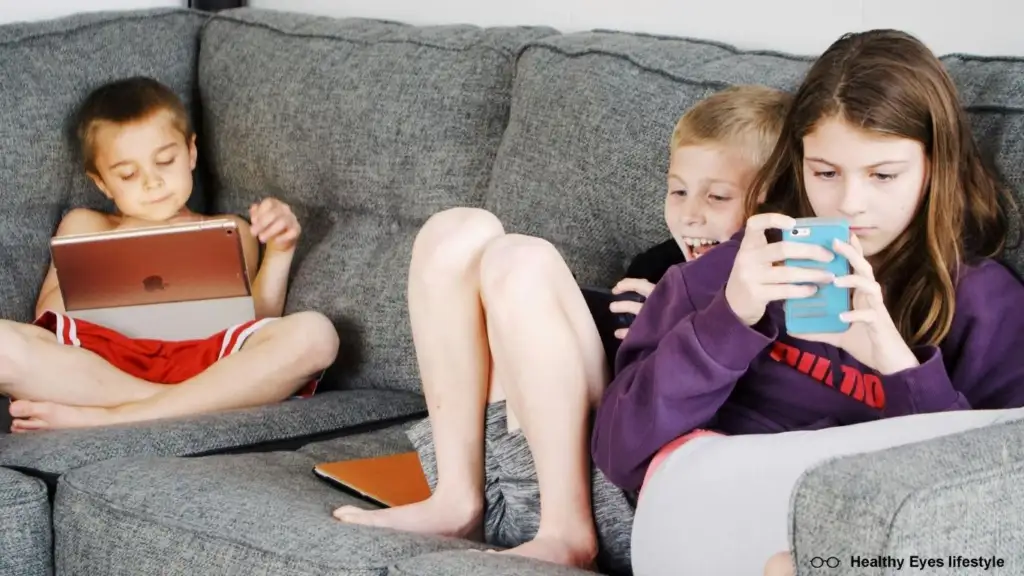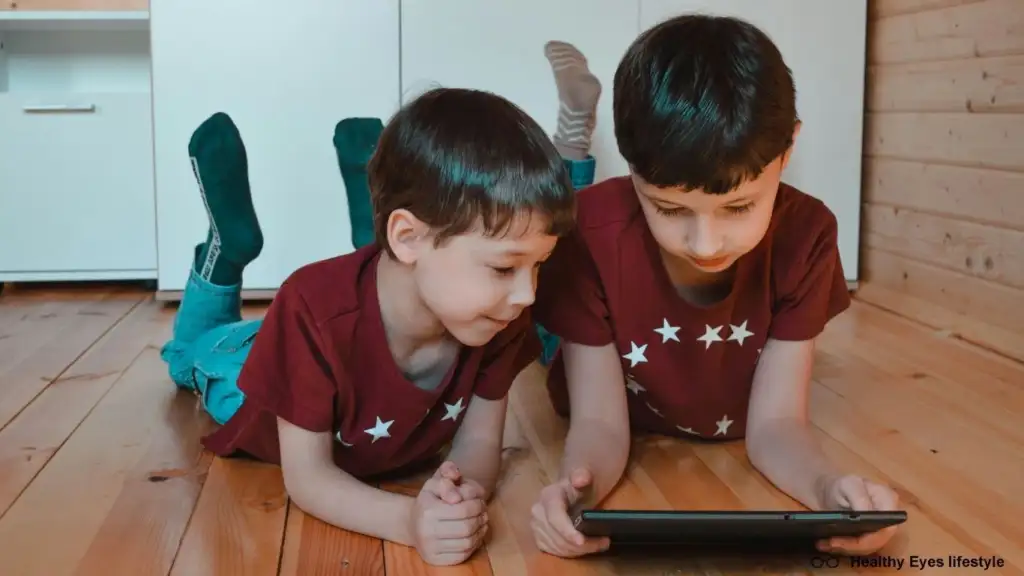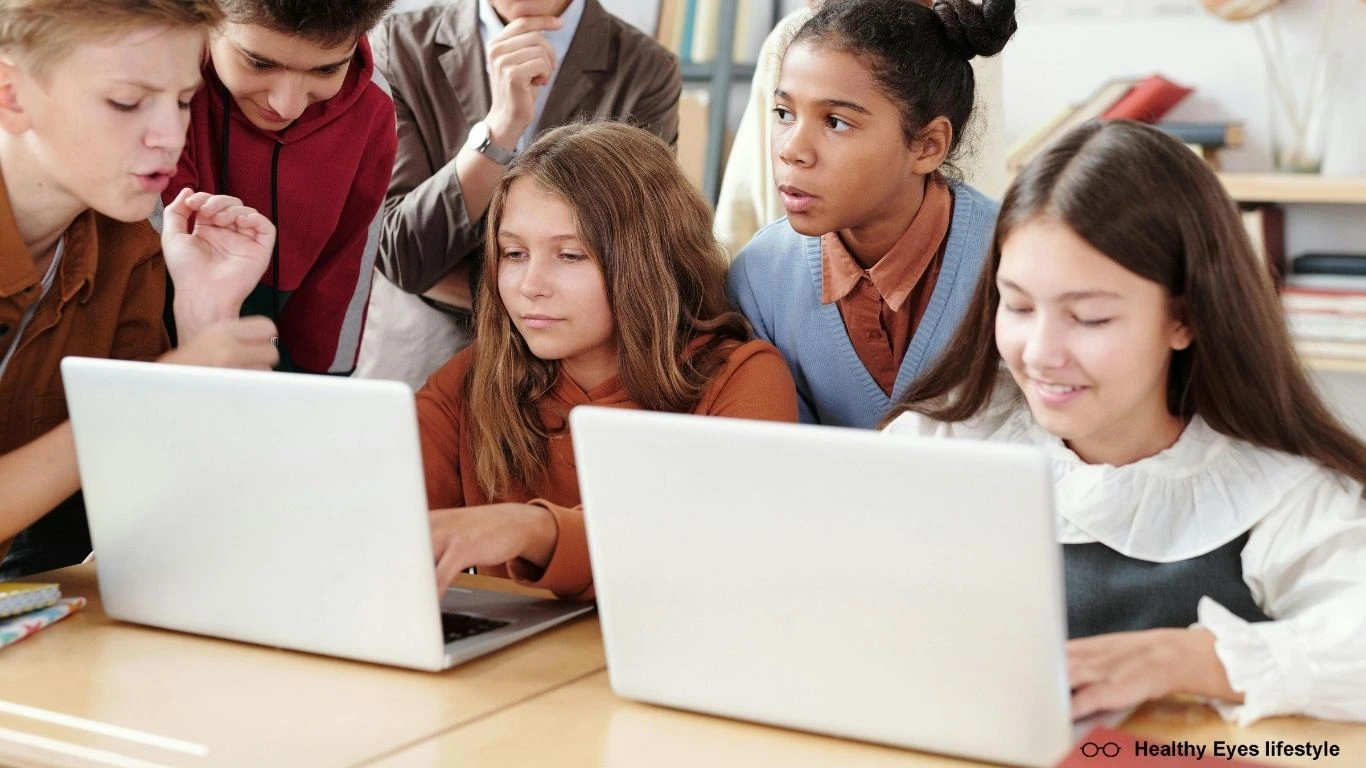Share This Article
Table of Contents
In today’s tech-driven world, Screens are an inseparable part of daily life. Whether it’s educational apps, entertaining games, or video calls with friends, digital devices have become essential for children. Yet, as screens claim more of their time and attention, you might find yourself wondering: how is all that screen exposure affecting their eyes? Specifically, what does blue light mean for their developing vision?
This guide dives into the science, the risks, and the practical steps you can take to safeguard your child’s eye health.
What Is Blue Light and Where Does It Come From?
Blue light is a type of visible light with short wavelengths and high energy. While it’s naturally emitted by the sun, the artificial sources surrounding us amplify our exposure. Think about the glow of your child’s tablet, the classroom’s LED lighting, or the family TV—it’s all around them.
Common Sources of Blue Light
- Digital Devices: Smartphones, tablets, laptops, and gaming consoles.
- LED Lighting: Energy-efficient bulbs used in homes and schools.
- Televisions: Particularly during binge-watching marathons.
Understanding where blue light comes from is the first step in limiting your child’s exposure.

How Blue Light Affects Children’s Eyes
Children’s eyes are still developing, which makes them more sensitive to environmental factors, including blue light. Unlike adults, kids’ eyes lack the protective pigments in their lenses that filter blue light.
Impact on Vision
- Digital Eye Strain: Hours of screen use can lead to dryness, discomfort, and difficulty focusing.
- Potential Long-Term Concerns: Some studies suggest prolonged exposure might harm the retina over time, although more research is needed.
Effect on Sleep
- Blue light interferes with melatonin production, the hormone that helps regulate sleep.
- Exposure in the evening can delay sleep onset, leading to tiredness and irritability the next day.
If your child struggles to fall asleep or frequently rubs their eyes after screen use, it could be a sign of overexposure.
Signs Your Child Might Be Struggling With Screen Time
As a parent, you know your child better than anyone. Keep an eye out for these red flags:
- Complaints of tired, sore, or irritated eyes.
- Increased blinking or rubbing of the eyes.
- Difficulty concentrating during homework or other tasks.
- Unusual changes in their sleep routine, like trouble falling or staying asleep.
Recognizing these signs early can help you take action before the problem escalates.

Simple Strategies to Protect Your Child’s Eyes From Blue Light
1. Set Screen Time Limits
The American Academy of Pediatrics (AAP) recommends:
- Ages 0–2: Avoid screens except for video chatting.
- Ages 2–5: Limit to one hour of high-quality programming daily.
- Ages 6+: Balance screen time with physical activity and family interactions.
2. Follow the 20-20-20 Rule
Teach your child this easy habit: every 20 minutes of screen use, look at something 20 feet away for 20 seconds. It gives their eyes a chance to relax and reset.
3. Invest in Blue Light Protection
- Blue Light Glasses: Available in kid-friendly designs, these can reduce exposure during screen use.
- Screen Filters: Attach these to devices to block a significant amount of blue light.
- Night Mode Settings: Activate “blue light reduction” features on phones, tablets, and laptops.
4. Encourage Outdoor Play
Natural light is not only less harsh on the eyes but also essential for overall eye development. Encourage your child to spend time outside daily, whether it’s riding a bike or playing tag with friends.
Healthy Alternatives to Screen Time
Balancing screen time with other activities is crucial for your child’s mental and physical well-being. Here are some ideas based on their age:
- Ages 2–5: Coloring books, building blocks, or simple board games.
- Ages 6–10: Outdoor sports, craft projects, or science kits.
- Ages 11+: Journaling, cooking, or volunteering in the community.
Creating a family schedule that includes screen-free time—such as during meals or before bed—can make a big difference.
Healthy Screen-Time Snacks
Nutritious snacks can keep your child fueled during screen sessions while promoting overall health.
| Snack Idea | Ingredients | Preparation Steps |
| Fruit Yogurt Cups | Greek yogurt, berries | Layer yogurt and fruit in a glass. |
| Veggie Platter | Carrots, cucumbers, hummus | Slice veggies; serve with hummus. |
| Trail Mix | Nuts, seeds, dried fruit | Mix all ingredients in a bowl. |

FAQ: What You Should Know About Blue Light and Kids
Does Blue Light Damage Children’s Eyes Permanently?
Research suggests that while blue light causes temporary discomfort, there’s no definitive evidence of long-term damage. However, more studies are needed to fully understand its effects.
Can Blue Light-Blocking Glasses Help?
Yes, they can reduce blue light exposure, but they’re not a standalone solution. Pair them with healthy screen habits.
How Much Screen Time Is Too Much?
Stick to the AAP’s recommendations and adjust based on your child’s needs. Balance is key.
Conclusion: Protecting Your Child’s Eyes in a Digital World
As technology continues to evolve, so does its role in your child’s life. The good news? You don’t have to choose between technology and their well-being. By setting clear boundaries, teaching healthy habits, and prioritizing screen-free activities, you can support their vision and overall health.
Start with small changes today—whether it’s limiting evening screen use or encouraging a round of outdoor play. Your child’s eyes (and sleep schedule) will thank you.
Call to Action:
Take the first step toward protecting your child’s eyes. Share this article with other parents and start a conversation about balancing screen time and eye health. Together, we can create a healthier digital future for our kids.



